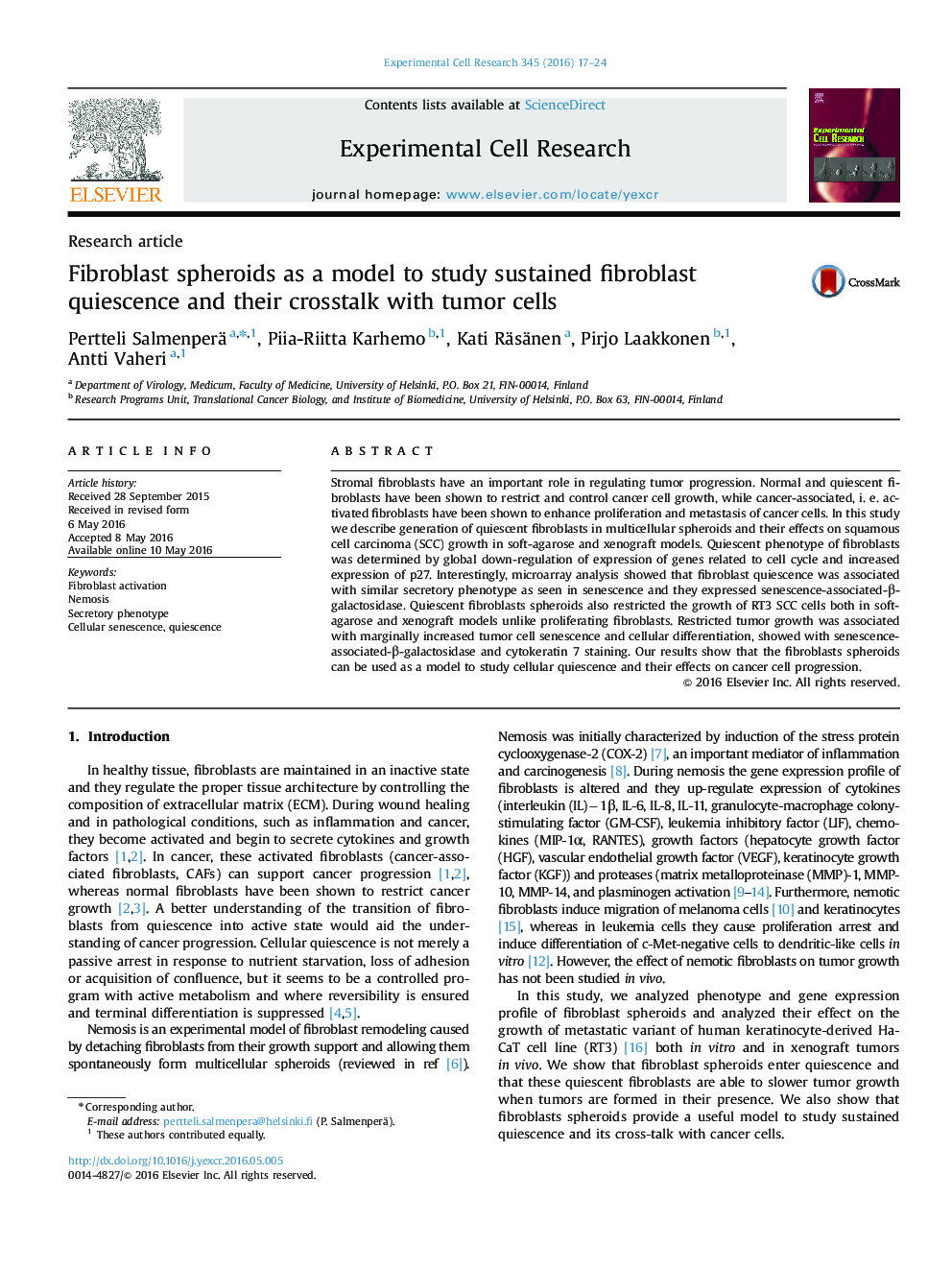| Article ID | Journal | Published Year | Pages | File Type |
|---|---|---|---|---|
| 2129959 | Experimental Cell Research | 2016 | 8 Pages |
•Fibroblasts acquire a sustained quiescence when grown as multicellular spheroids.•This quiescence is associated with drastic change in gene expression.•Fibroblasts spheroids secrete various inflammation-linked cytokines and chemokines.•Fibroblasts spheroids reduced growth of RT3 SCC cells in xenograft model.
Stromal fibroblasts have an important role in regulating tumor progression. Normal and quiescent fibroblasts have been shown to restrict and control cancer cell growth, while cancer-associated, i. e. activated fibroblasts have been shown to enhance proliferation and metastasis of cancer cells. In this study we describe generation of quiescent fibroblasts in multicellular spheroids and their effects on squamous cell carcinoma (SCC) growth in soft-agarose and xenograft models. Quiescent phenotype of fibroblasts was determined by global down-regulation of expression of genes related to cell cycle and increased expression of p27. Interestingly, microarray analysis showed that fibroblast quiescence was associated with similar secretory phenotype as seen in senescence and they expressed senescence-associated-β-galactosidase. Quiescent fibroblasts spheroids also restricted the growth of RT3 SCC cells both in soft-agarose and xenograft models unlike proliferating fibroblasts. Restricted tumor growth was associated with marginally increased tumor cell senescence and cellular differentiation, showed with senescence-associated-β-galactosidase and cytokeratin 7 staining. Our results show that the fibroblasts spheroids can be used as a model to study cellular quiescence and their effects on cancer cell progression.
Graphical abstractFigure optionsDownload full-size imageDownload high-quality image (178 K)Download as PowerPoint slide
